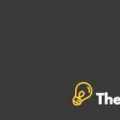Construct the promised cash flows to directly lending $5.8 million in commercial mortgages using the information contained in exhibit 6. Estimate the expected return on direct lending.
Calculations with this respect havebeen made in the exhibit.
Construct the amortization schedule for the 6 mortgages that are in the CMBS.
Calculations with this respect havebeen made in the exhibit.
Review the underwriting of each of the six loans in the CMBS deal. Based on your review of the loan documentation, which loan(s) in the CMBS deal causes you the most concern about future potential losses? Why?
The commercial loans are written under the commercial’s creditors. These loans include various credit terms and terminologies. The components of commercial lenders include insurance companies and commercial mortgage banks. This helps the commercial lenders to evaluate the overall risks associated in acquiring the loan via portfolio management.
In exhibit 1, a comprehensive calculations have been made with respect to the 6 loans in the CMBS deal.
The calculations made in the exhibit show that the loan 1 has an underwritten NCF of approximately $10 million, whereas, the cash flow of property under this loan is approximately $12 million. This shows that the cash flow of property is more than the Underwritten NCF, which depicts that the benefit under loan 1 would exceed the cost by 20%.
The calculations also show that the loan 2 has an underwritten NCF of approximately $10 million, whereas, the cash flow of property under this loan is approximately $7 million. This shows that the cash flow of property is less than the Underwritten NCF, which depicts that the cost under loan 1 would exceed the benefit by 32%.
In addition to this, the calculations show that the loan 3 has an underwritten NCF of approximately $5 million, whereas, the cash flow of property under this loan is also approximately $5 million. This shows that the cash flow of property is equal to the Underwritten NCF. This depicts that the benefit associated is equal to the cost associated with the loan.
In addition to this, the calculations show that the loan 4 has an underwritten NCF of approximately $10 million, whereas, the cash flow of property under this loan is also approximately $10 million. This shows that the cash flow of property is equal to the Underwritten NCF. This depicts that the benefit associated is equal to the cost associated with the loan.
Furthermore, the calculations show that loan 5 has an underwritten NCF of approximately $4 million, whereas, the cash flow of property under this loan is also approximately $4 million. This shows that the cash flow of property is equal to the Underwritten NCF. This depicts that the benefit associated is equal to the cost associated with the loan.
The Return of the Loan Case Solution
Meanwhile, the calculations show that the loan 6 has an underwritten NCF of approximately $5 million, whereas, the cash flow of property under this loan is also approximately $5 million. This shows that the cash flow of property is equal to the Underwritten NCF. This depicts that the benefit associated is equal to the cost associated with the loan.
Thus, this shows that in each 6 loans, the benefit associated with the costs is either equal to or less than the cost associated with the loan, except in the case of loan 2under which the costs associated with the loan is more than the benefit derived. Therefore, it is concluded that loan2 in CMBS would cause potential losses in the future............................
This is just a sample partial case solution. Please place the order on the website to order your own originally done case solution.









